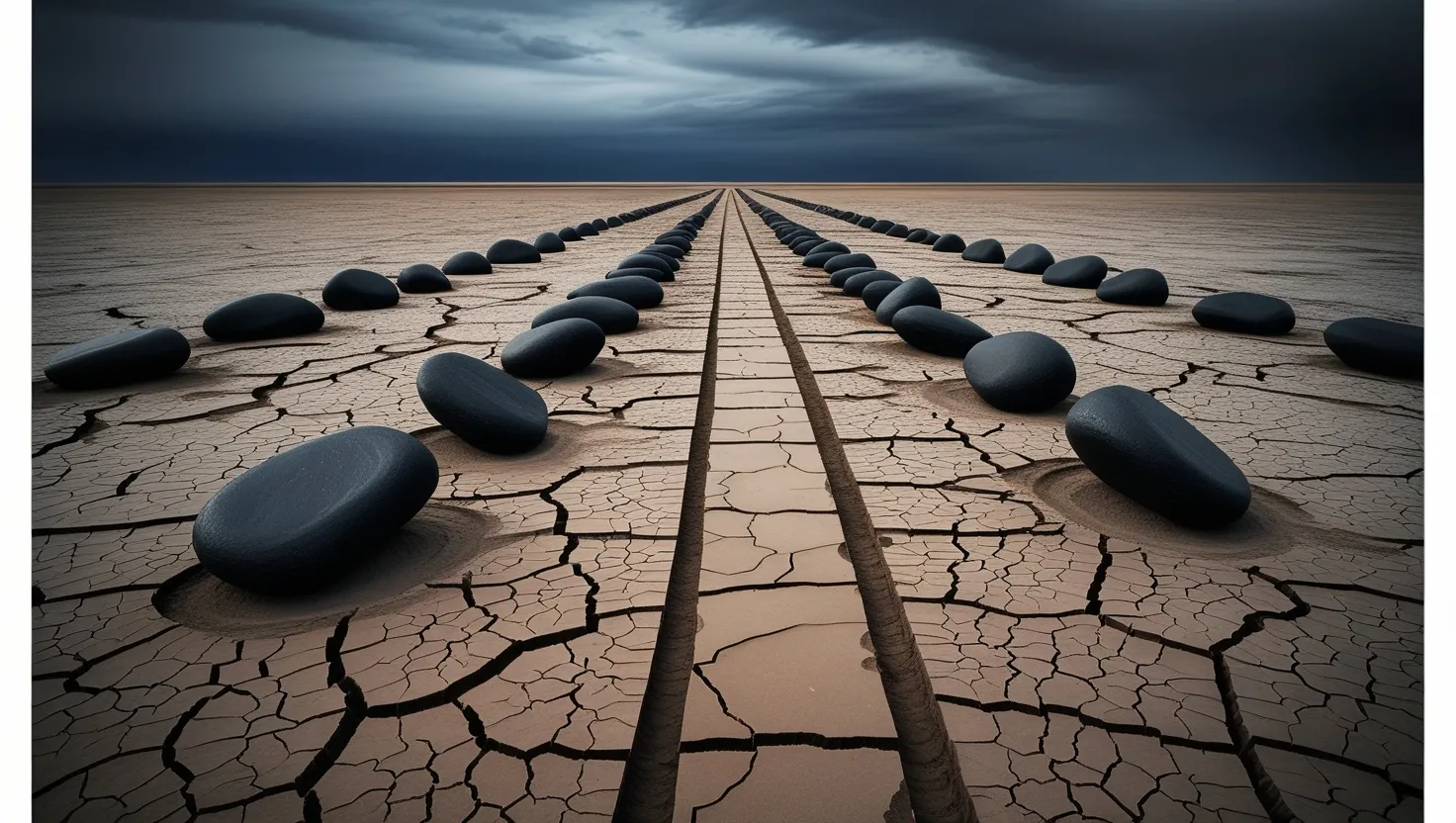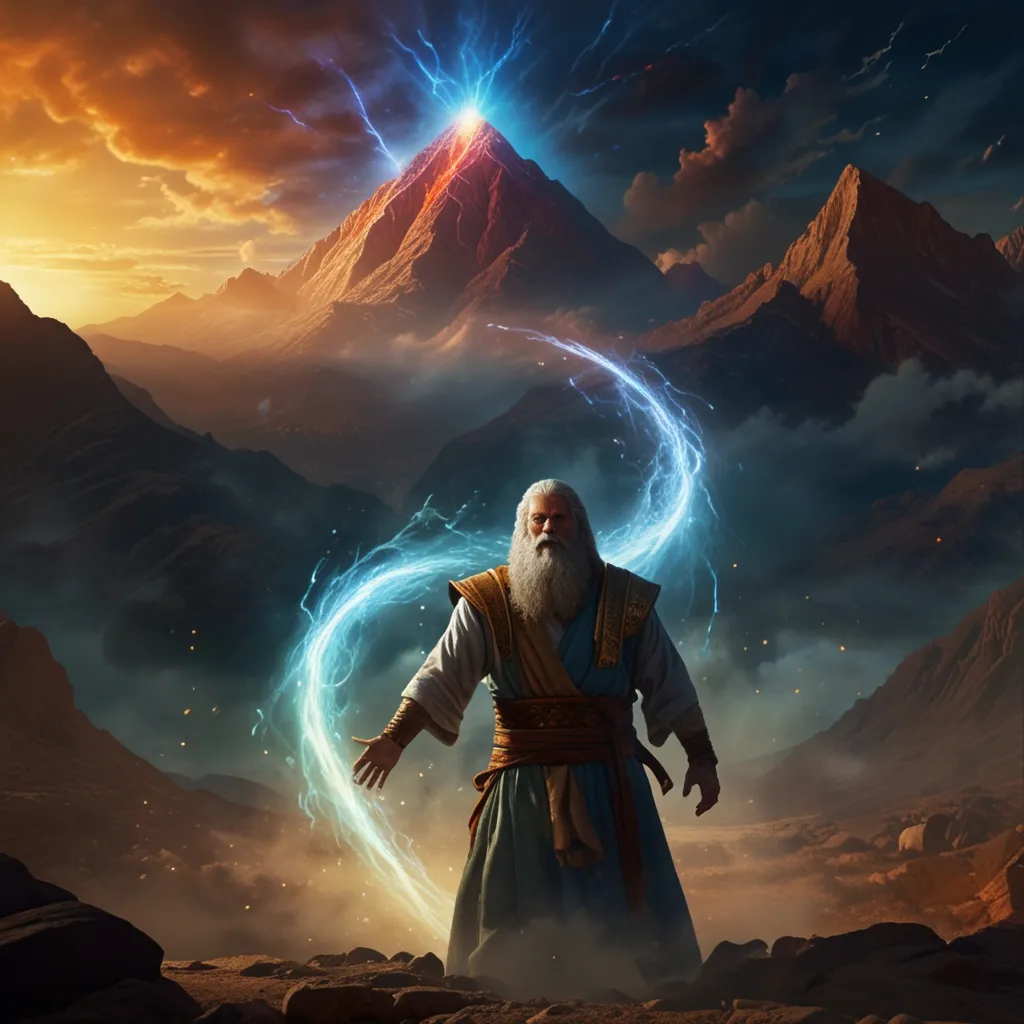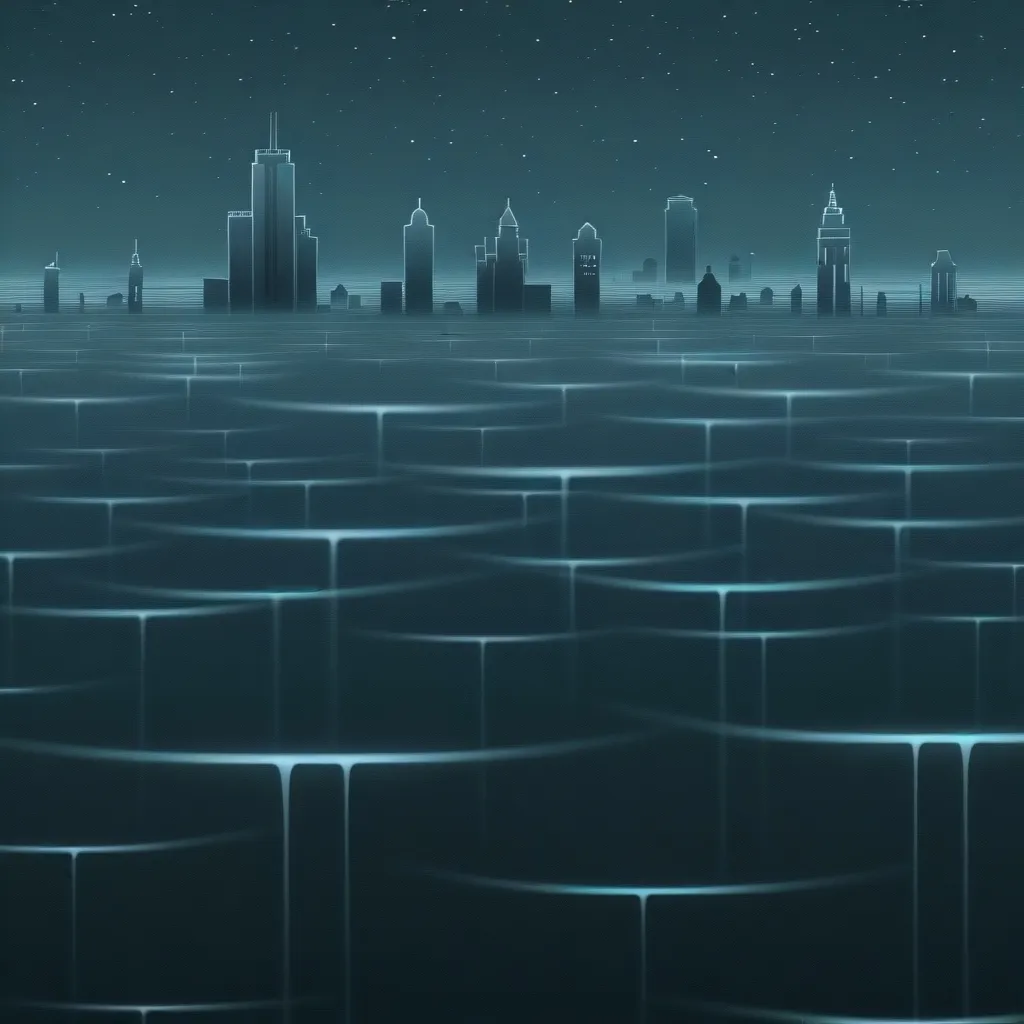Sometimes nature generates questions even our best science can’t quite answer. When I try to explain Earth’s most confounding geological oddities—those places where rocks, gases, and landscapes seem to disregard what textbooks promise—I always start with a simple reminder: the planet is still keeping secrets from us, and sometimes, those secrets are hidden in plain sight.
Have you ever wondered what it feels like to see a stone move on its own, or to watch fire burn with no visible fuel source? Imagine walking across a desert and hearing the dunes sing, or seeing an electric-blue river of fire at midnight. These are the kind of experiences that don’t just challenge our understanding—they expand our sense of wonder.
There’s a remote corner of Death Valley called Racetrack Playa. Here, massive stones—some weighing as much as a grown man—glide across the cracked mud, leaving behind long, sinuous trails. For decades, no one could explain it. Theories proliferated: tricksters, magnetic anomalies, even supernatural forces. It wasn’t until recent years that someone finally captured their movement on camera, revealing a peculiar combination of overnight ice, high winds, and ultra-slick mud. Yet, even with the mechanics visible, there remain questions about why these particular stones move and others don’t. Why do trails suddenly curve, double back, or run parallel for meters, then diverge?
“There are more things in Heaven and Earth, Horatio, than are dreamt of in your philosophy.” That line from Hamlet captures the feeling I get when I stand at the edge of a mystery like this.
Across the globe in Turkey, the ancient eternal flames of Yanartaş burn from cracks in bare stone. These blue and yellow flames have flickered for thousands of years—so long that myths say they guided sailors passing by the coast at night. What fascinates me isn’t just the endurance of these flames, but the chemical enigma beneath them. The gas fueling the fire is mostly methane, but the local geology holds no known giant gas reservoir. How can a flame persist, undiminished, for centuries—millennia—even as nothing in the local rock suggests a sustainable source? The site has been studied for generations, with advanced tools unable to pin down the ultimate origin. Here, chemistry and geology wrestle with questions that refuse to fit known models. Doesn’t it make you wonder what else burns unseen beneath the surface?
If you ever visit the world’s great deserts, you might stumble upon a truly bizarre phenomenon: sand dunes that sing. At places like Kelso Dunes in California and across the Gobi, the sand can emit a huge, booming note—sometimes heard as a distant rumble, sometimes as a close-up drone that vibrates through your bones. The sound is so loud it can be mistaken for distant thunder. What’s confounding is that not all dunes sing, and even dunes with seemingly identical sand and slopes can produce entirely different acoustic effects. Scientists who’ve spent years in the sand have measured grain size, shape, roundness, humidity, even sand chemistry, but the formula for making these dunes “sing” remains elusive. Some say it’s a critical density of dry grains moving in sync; others believe the answer is buried deeper, perhaps in ancient layering or sub-surface resonance. Why does one dune hum and another remain silent?
“The important thing is not to stop questioning. Curiosity has its own reason for existing,” said Einstein. I think of this every time I try to explain a desert that can sing to the sky.
In Antarctica, a remote red waterfall pours from the Taylor Glacier. Known as Blood Falls, this vivid plume is not the work of some cosmic horror, but rather highly iron-rich brine. Yet, the real puzzle is deeper. This brine provides a sanctuary for ancient microbes that have lived sealed away from sunlight and atmospheric oxygen for millions of years. How do these life forms survive, metabolizing iron and sulfate in utter darkness? Their ecosystem is so isolated that it’s been compared to conditions beneath Mars’ icy crust. Each droplet of Blood Falls contains clues about prehistory, resilience, and maybe, the kind of unexpected life that could exist elsewhere in the solar system. What if, we ask ourselves, the rules of life are far broader than we imagined?
Moving from ice to fire, I often think about Indonesia’s Kawah Ijen volcano. Here, at night, the crater comes alive with what look like rivers of blue lava. Unlike traditional red-orange lava, this display is not molten rock, but a combustion of sulfuric gases that ignite when exposed to oxygen and reach temperatures over 600°C. The flames cast an electric-blue glow, sometimes appearing to flow down the volcano. What’s odd is the stability of these flames and the way they persist despite variable winds, rain, and other conditions that should dampen the reaction. Why does this display occur here, and not at other sulfur-rich volcanic sites across the world? What controls the combustion so precisely, and why do some gases burn, while others escape invisibly? There’s something about standing in the darkness, surrounded by flickering blue, that reminds me the textbook version of geology only tells half the story.
On a windswept beach in New Zealand lie the Moeraki Boulders, clusters of enormous, almost perfectly spherical stones scattered across the sand. Each is a natural concretion, basically a mineral-hard “pearl” that forms in sediment. What’s astounding is their size—some up to two meters across—and the speed at which they formed, geologically speaking. Most concretions are small and grow slowly, but the Moeraki boulders are giant, with an internal structure more regular and precise than any other known natural process. What was different in this patch of coast? What chemical and physical forces conspired to make these stones grow so big, so round, and so fast? Every boulder challenges our sense of what mineral formation is supposed to look like. If you could crack one open, would you find the signature of some lost geological event, or just a slow miracle of chemistry?
Just one more marvel: in the middle of Turkmenistan’s Karakum Desert burns the Darvaza gas crater, a sight locals call the Door to Hell. This pit, over 60 meters wide, has been in flames since 1971. The blaze started when Soviet engineers ignited leaking natural gas to prevent toxic emissions, expecting the fire to burn out in days or weeks. Instead, the fire has roared for over half a century, seemingly without exhausting its fuel. How is this possible? No known gas pocket under the site should support this kind of longevity. Geologists have drilled, sampled, and theorized, yet nobody can definitively say why the crater burns so steadily. It’s like a perpetual bonfire written into the landscape, a reminder that we don’t always get to dictate the terms of our relationship with the planet. If we can’t predict when this fire will end, what other processes are silently outlasting our expectations?
Sometimes I think about what our planet is communicating through these mysteries. Are they reminders of humility, or invitations to keep looking deeper? Anomalies like these are where science is at its most honest: it admits it doesn’t know, and it keeps asking.
“Science is a way of thinking much more than it is a body of knowledge.” Carl Sagan’s words echo any time I ponder nature’s unsolved riddles.
So much of geology is about building models—predicting, measuring, explaining. Yet, the outliers are just as significant. When stones move across a dry lake, or ancient flames burn night after night, or blue rivers of fire carve through volcanic ash, what we see is the Earth confessing that not every system has yet found its equation.
The next time you’re out in nature, ask yourself: what am I missing? What questions have we not thought to ask yet? The world’s greatest puzzles often start with a simple act of noticing. If the planet can still surprise our best instruments, what else might it be waiting for us to discover?
“Our ignorance is not so vast as our failure to use what we know.” As I marvel at these geological exceptions, I don’t see them as failures of science—but as promises that there is always more to learn.
So, which oddity leaves you most curious? If you could visit only one, where would you go—and what question would you chase first?






